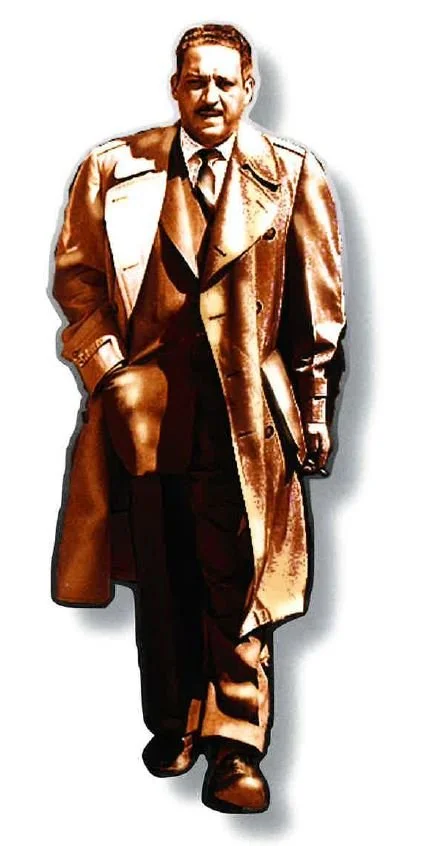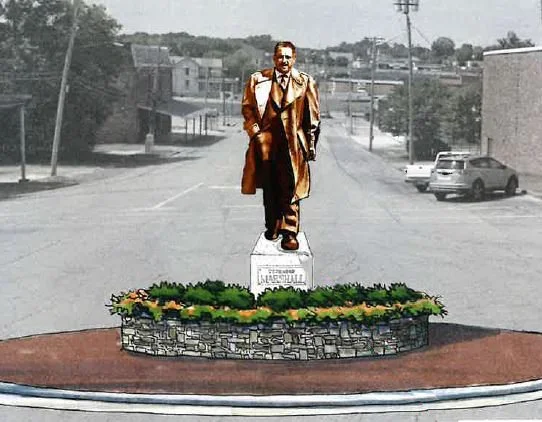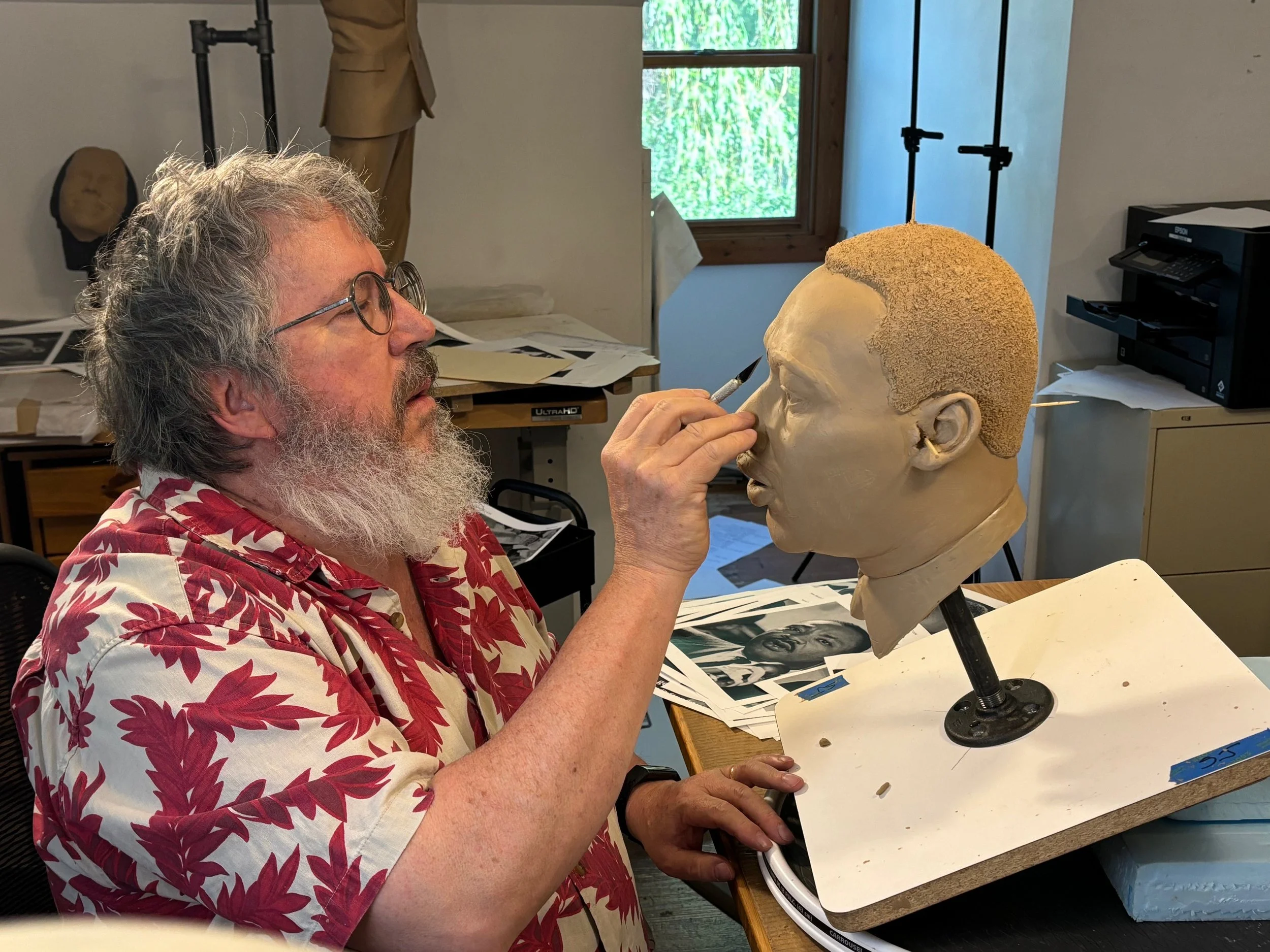THURGOOD MARSHALL STATUE
Gateway to Columbia’s Civil Rights Story: The Thurgood Marshall Monument
In conjunction with the City of Columbia, CPJI is championing an effort to honor the legacy of Supreme Court Justice Thurgood Marshall, who, as a young NAACP lawyer, defended Black residents arrested as part of the 1946 Columbia riots and was almost lynched near the Duck River.
This statue, which is a gift from CPJI to the city, gives the community an opportunity to begin moving forward and show our recognition of the past by using public art to reveal a story of hope, freedom, and justice.
We also believe the statue will spark visitors’ curiosity, leading them to explore Columbia’s history and role in Civil Rights more completely.
For questions about the project or to learn more about sponsorship opportunities, contact columbiapeaceandjustice@gmail.com.
WHY WE ARE HONORING THURGOOD MARSHALL
The injustices of the 1946 riots in Columbia have remained largely untold, a pivotal yet obscured chapter in our history that helped catalyze the Civil Rights Movement. While Thurgood Marshall was not the central figure of these events, his involvement presents a compelling entry point for this story.
During his time in Columbia, despite being sidelined by pneumonia, Marshall's commitment never wavered. He was thrust into the heart of the conflict, facing threats that would test his resolve and have a profound impact on his life and legacy.
By commemorating Marshall, we not only highlight the national significance of these events but also their deep local impact, enhancing the story’s relevance and underscoring its importance in the broader context of American history.

THIS IS ONLY THE BEGINNING
James Stephenson. Gladys Stephenson. Saul Blair. James Morton. Z. Alexander Looby.
These are the names of just some of the individuals who were pivotal during the 1946 riots, and their stories and contributions deserve recognition. With the erection of the Thurgood Marshall statue, CPJI is making a commitment to the community that these stories will be told.
The history of the riots will initially be shared through informational placards accompanying Marshall’s statue. However, this is just the beginning. We will also continue our efforts to develop a pocket park on the East Side that will serve as a living tribute to the bravery of Columbia’s Black community, memorializing their courageous acts of resistance in 1946.
"This project is needed and will start all kinds of conversations across our community. Our goal is to promote history, promote justice and expand conversation for a better community.”
– Dr. Christa Martin, project co-chair and former vice-mayor of Columbia
Where the Statue Will Be Located
The Thurgood Marshall statue will be located on East 8th Street, serving as a gateway to Columbia’s historical Black business district, the heart of the 1946 riots. This installation is part of a larger area revitalization, including a new roundabout and sidewalk upgrades.
ABOUT THE SCULPTURE
We have commissioned artist David Alan Clark, renowned for his intense and emotionally deep sculptures of historical figures, to create the monument. Inspired by an iconic 1956 Associated Press photo, Clark will depict Marshall at age 38 during his work in Columbia, embodying his youthful vigor and unwavering determination.
Marshall will be shown striding uphill from the riot-damaged East 8th Street toward the Maury County Courthouse, a symbol of his battle against racial violence and oppression. A shattered noose beneath his feet highlights the threats he faced. This sculpture will be cast at 125% life size to magnify Marshall's significant impact and ensure his larger-than-life legacy is appropriately honored.
ABOUT THE ARTIST
Raised in the high desert near Green River, Wyoming, David Alan Clark produced his first commissioned bronze while still in his teens. After earning his BFA, he worked in the advertising industry in Chicago before returning full-time to sculpture and Wyoming.
Clark’s monumental sculpture work can be found in cities, universities and private collections across the country. His commissioned public art projects include:
Former slave, community leader, minister, and Texas state senator, Senator Matthew Gaines at Texas A&M University, College Station, Texas
Civil Rights leaders Rev. Hosea Williams, W. A. Scott, Dr. Rita Samuels and Dorothey Lee Bolden, in Atlanta
President Abraham Lincoln (shown as a young state senator) in Naperville, Illinois
Dr. James Cash, the first Black student-athlete at Texas Christian University (TCU) and the first Black basketball player in the Southwest Conference, at TCU, Fort Worth, Texas
St. Francis, St. Francis Cancer Center, Tulsa, Oklahoma
“As an aspiring attorney and judge, I have been inspired by Thurgood Marshall since I was in sixth grade. To be able to bring this statue to my city is really important to me. I think this statue, with the way Marshall is walking up toward the courthouse with a face full of determination, is really powerful.”
—Tre'Veontae Martin, Senior at Columbia Central High School, member of Columbia Mayor’s Youth Council and member of the Thurgood Marshall Statue Committee
JOIN US IN TELLING THIS STORY
Your donation will help us begin telling a story that has too long gone unrecognized.




